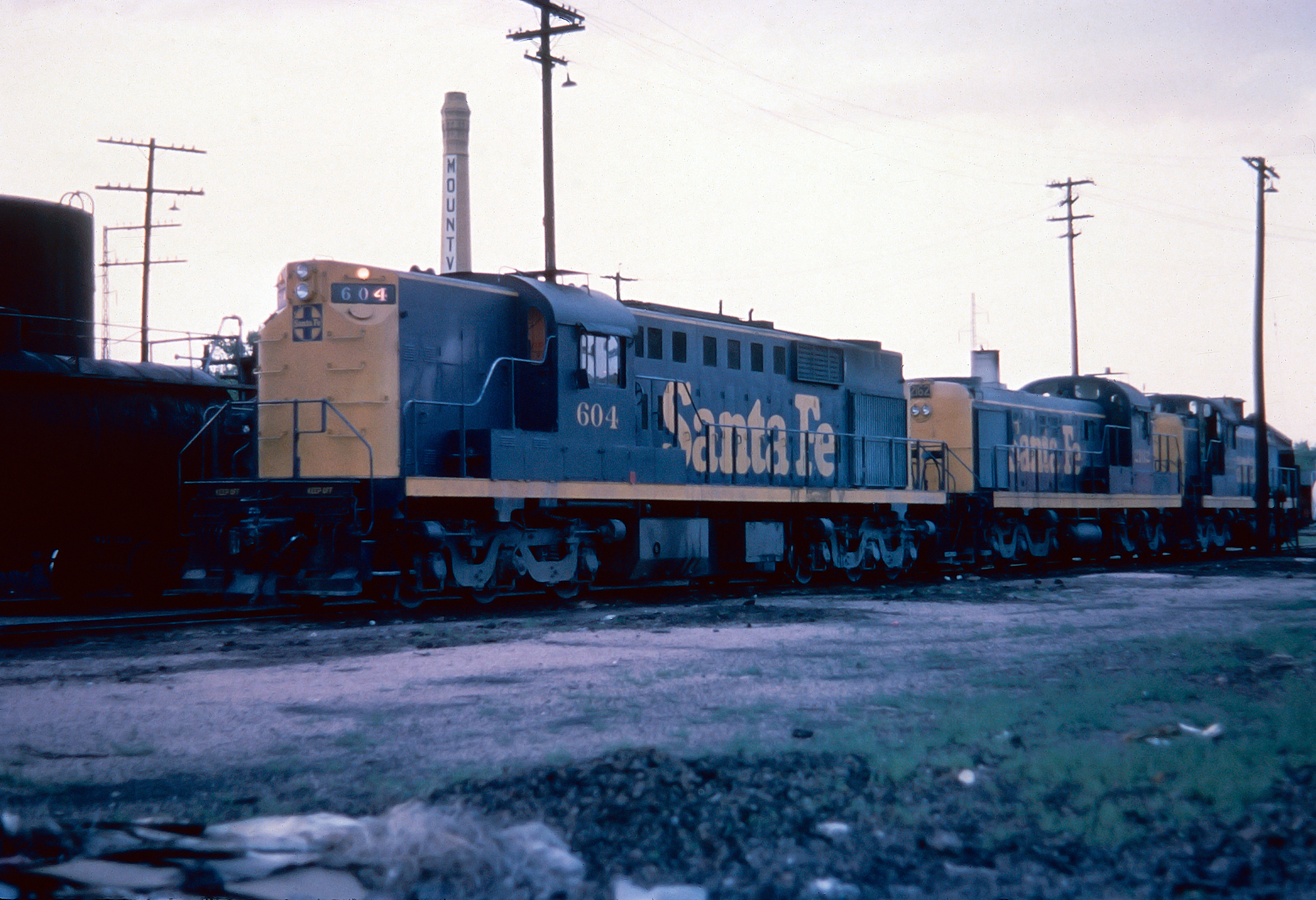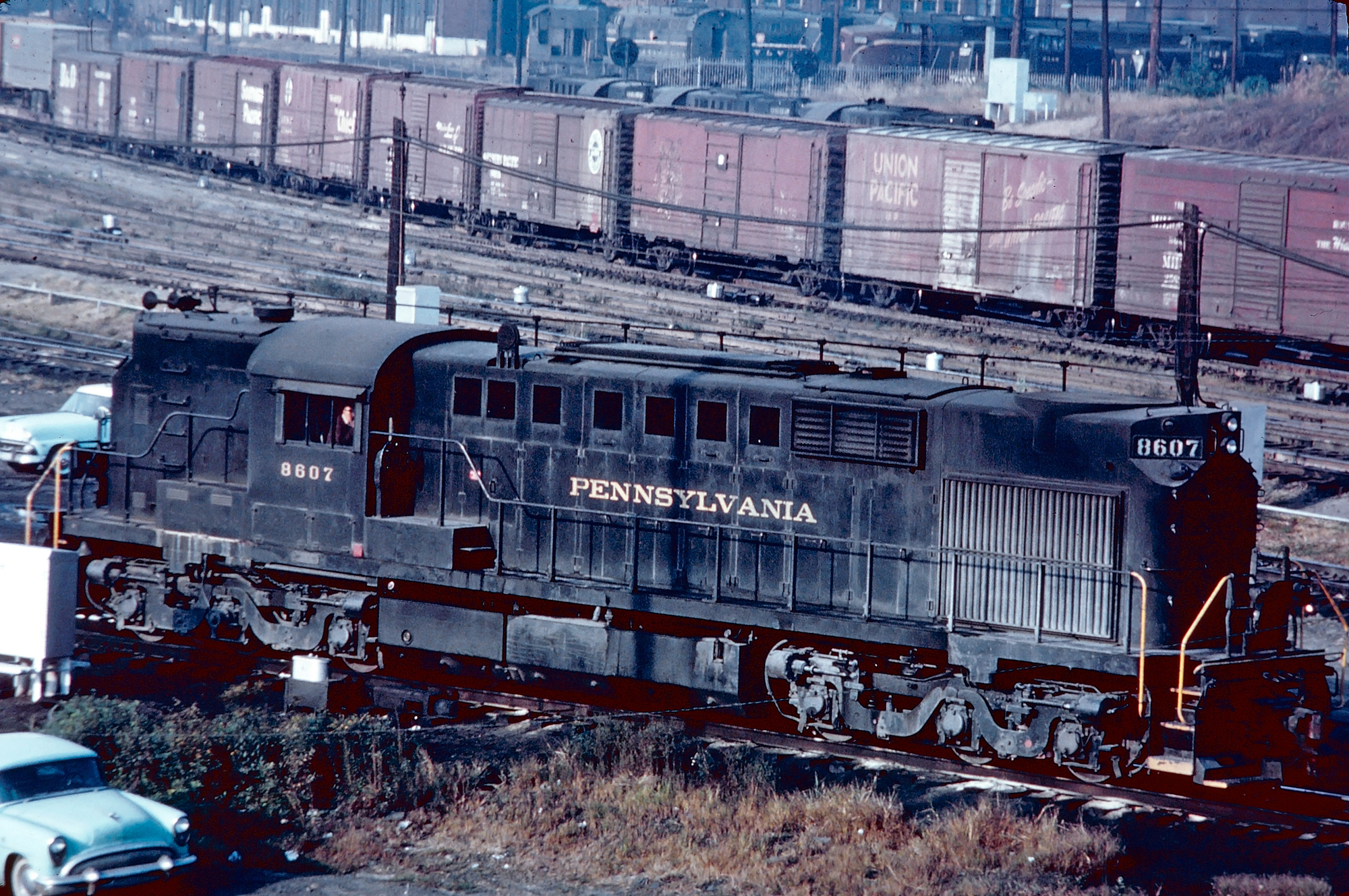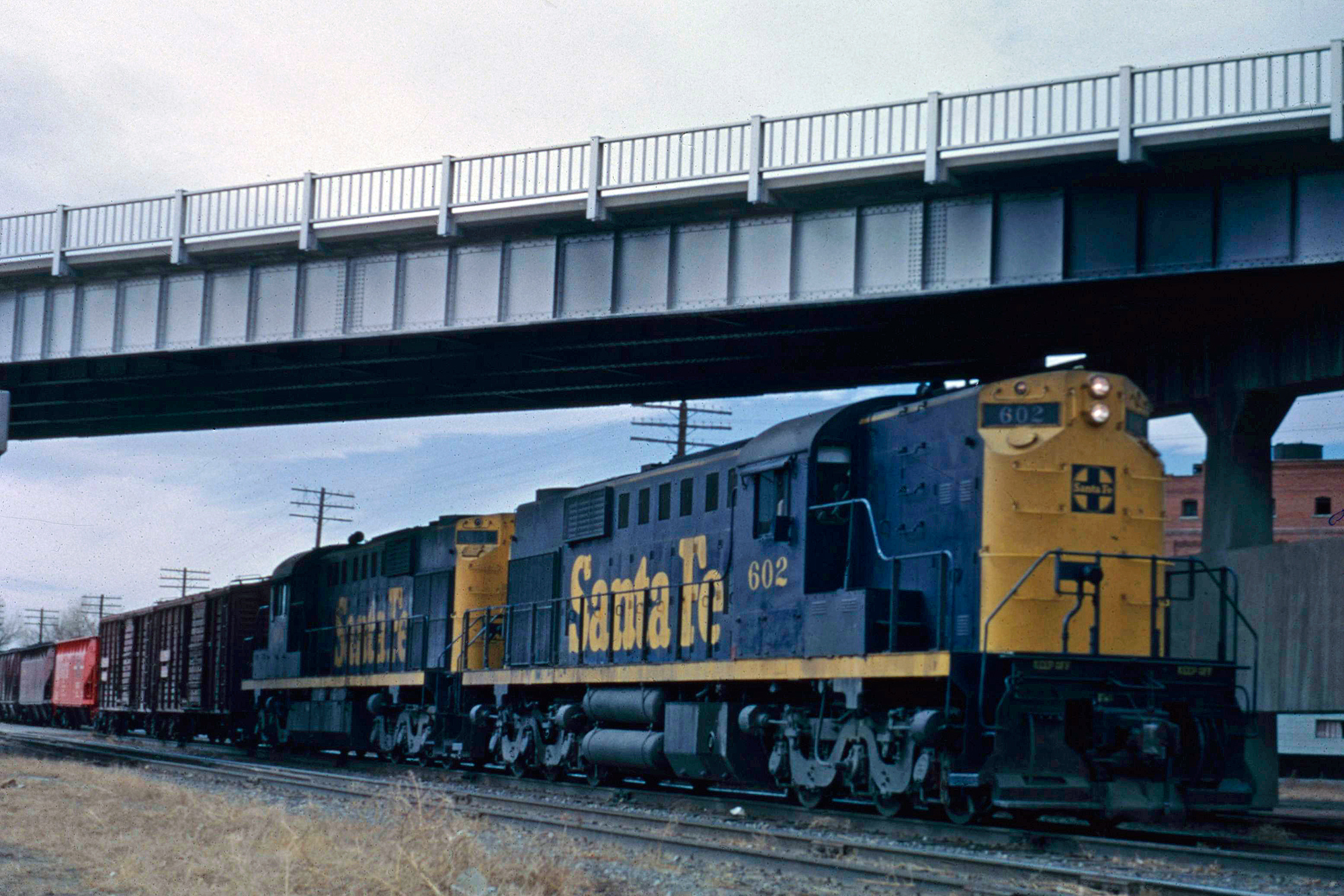"RSD-7": A High, Short Hood Alco
Last revised: December 27, 2024
By: Adam Burns
The RSD7, a remarkably robust six-axle locomotive, represented a significant advancement in the company's catalog, surpassing any previous model produced by the company. Notably, it was not conceived to rival Electro-Motive, then the unquestioned leader in the industry.
Rather, the focus was decidedly set on competing against Fairbanks Morse's acclaimed H24-66 "Train Master," a powerhouse in the locomotive market renowned for its exceptional force. Yet, this strategic decision would contribute to Alco's downfall, as the builder fell short in anticipating the market's evolving demands.
Ironically, the company bears the distinction of pioneering the invention of the road-switcher - an innovation that remains central to the industry's primary road power today. Regrettably, the management overlooked the potential of this landmark achievement for fostering enduring success.
During the RSD7's developmental phase, railroads were yet to embrace six-axle diesels, let alone high horsepower models. Consequently, the novel design added to the growing series of challenges confronted by the American Locomotive Company (Alco), underlining a concerning trend for the organization.
Unhappily, the limited production run of the RSD7, which numbered just 29 examples, has meant that none were preserved. This unfortunate reality marks a poignant moment in the ever-evolving narrative of locomotive history.
Photos
 Santa Fe RSD7 #604 and a pair of RSD5's (including #2162) layover at Colorado & Southern's Rice Yard in Denver, Colorado, circa 1962. American-Rails.com collection.
Santa Fe RSD7 #604 and a pair of RSD5's (including #2162) layover at Colorado & Southern's Rice Yard in Denver, Colorado, circa 1962. American-Rails.com collection.Overview
The Fairbanks Morse Company dated back to the 1830s and became highly regarded in later years for its durable marine diesel engines.
However, in the mid-1940s it decided to enter the highly competitive diesel locomotive market, making a name for itself via its opposed-piston prime movers. Interestingly, when FM decided to release the H24-66 model it had been building locomotives for less than 10 years.
The design was nearly a decade ahead of itself as high horsepower, six-axle locomotives had yet to catch on with railroads. However, for some reason Alco decided that it needed to offer its own version of FM's Train Master.
Oddly, the company should have known the design was unpopular as its previous five other six-axle models had sold a combined 666 units (the RSD1, RSC2, RSC3, RSD4, and RSD5).
While the RSD5 (a modestly successful model, in comparison to how six-axle locomotives were selling at the time) was still in production, Alco released the RSD7.
The locomotive began production in 1955 and used the builder's standard prime mover of the time, the 244 model. It was the last model to use this engine prior to Alco's introduction of the 251 prime mover.
Horsepower
The RSD7 could originally produce 2,250 horsepower although after initial sales proved quite poor it increased this to 2,400 horsepower, which directly matched the FM's H24-66. The locomotive saw a major change in how Alco produced road switchers.
Despite having originally pioneered the design, the Schenectady builder took a cue from EMD and began producing its later road switchers, beginning with the RSD7, with hoods that ran flush with the top of the cab.
 Pennsylvania RSD7 #8607 is seen here in Altoona, Pennsylvania in September, 1964. Note Baldwin "Sharknose" cab units, Fairbanks-Morse power, and even 44-ton switchers near the Erecting & Machine Shop in the background. Fred Byerly photo. American-Rails.com collection.
Pennsylvania RSD7 #8607 is seen here in Altoona, Pennsylvania in September, 1964. Note Baldwin "Sharknose" cab units, Fairbanks-Morse power, and even 44-ton switchers near the Erecting & Machine Shop in the background. Fred Byerly photo. American-Rails.com collection.Savvy diesel spotters can easily identify Alco's version, however, by the notched corners. The RSD7 proved one of the most powerful RS series designs and also offered some of the highest tractive efforts.
These later models were some of the last built in conjunction with GE, as by 1959 that began producing its own line of diesels, the Universal series.
Reception
Unfortunately, the RSD7 saw little
success, selling only 29 units to three Class I railroads; Chesapeake
& Ohio, Pennsylvania, and Santa Fe (along with Alco's two
demonstrators, #DL600 and #DL601).
Even more unfortunate, the H24-66, also considered a failure by FM, sold some 127 TMs nearly five times more than the RSD7.
Data Sheet and Specifications
| Alco Class | 606-DL-366 |
| Entered Production | 1/11/1954 (Santa Fe #600) |
| Years Produced | 1/11/1954-4/5/1956 |
| Model Specification | DL600/A |
| Engine | 244, V-16 |
| Horsepower | 2,250 (Increased to 2,450 HP in variant DL600A) |
| RPM | 1,000 |
| Carbody Styling | Alco |
| Length (Between Coupler Pulling Faces) | 65' 1" (66' 7" in DL600A) |
| Weight | 366,000 Lbs./DL600: 360,000 Lbs./DL600A (Optional ballasting to 400,000 Lbs. in DL600A) |
| Dynamic Brakes | Optional |
| Trucks | C-C |
| Truck Type | Trimount |
| Truck Wheelbase | 12' 6" |
| Wheel Size | 40" |
| Traction Motors | GE 752 (6) |
| Traction Generator | GT586 |
| Steam Generator | - |
| Gear Ratio | 65:18/DL600, (Optional in DL600A: 74:18 [Top speed of 65 MPH.], 65:1) |
| Tractive Effort Rating | 78,750 Lbs. at 5.5 MPH |
| Top Speed | 75 MPH |
Production Roster
Total Built = 29
| Owner | Road Number(s) | Serial Number(s) | Date Built |
|---|---|---|---|
| Alco (Demonstrator) | DL600, DL601 (became Santa Fe #600-601) | 80960, 81088 | 1/1954, 2/1954 |
| Santa Fe | 602-606 | 81106-81110 | 10/1955 - 11/1955 |
| Santa Fe | 607-611 | 81121-81125 | 11/1955 |
| Chesapeake & Ohio | 6800-6811 | 81901-81912 | 2/1956 - 4/1956 |
| Pennsylvania | 8606-8610 | 81745-81749 | 12/1955 |
Sources
- Foster, Gerald. A Field Guide To Trains. New York: Houghton Mifflin, 1996.
- Kirkland, John F. Diesel Builders, The: Volume Two, American Locomotive Company And Montreal Locomotive Works. Glendale: Interurban Press, 1989.
- Pinkepank, Jerry A. Diesel Spotter's Guide. Milwaukee: Kalmbach Publishing Company, 1967.
- Solomon, Brian. Alco Locomotives. Minneapolis: Voyageur Press, 2009.
 Santa Fe RSD7 #602 appears to be carrying out switching chores in Denver, Colorado on October 31, 1961. American-Rails.com collection.
Santa Fe RSD7 #602 appears to be carrying out switching chores in Denver, Colorado on October 31, 1961. American-Rails.com collection.Alco's six axle models were meant to provide a sizable increase in traction; for instance, the ten purchased by the Atchison, Topeka & Santa Fe were used exclusively in helper service along the railroad's high grades in New Mexico and Colorado, such as Raton Pass.
Despite this now obvious economic advantage, railroads had yet to bite on six-axle locomotives. Ironically, FM and Alco were both just a few years away from missing the market; EMD began selling increasingly more six-axle designs during the transition decade of the 1960s such as the SD35, SD38, and the incredibly popular SD40 series.
Recent Articles
-
Cincinnati, Hamilton & Dayton Railway: B&O's Midwestern Component
Jan 29, 25 09:48 PM
The Cincinnati, Hamilton & Dayton Railway's history could be traced back to 1846 and would go on to link its namesake cities. It was acquired by the Baltimore & Ohio in 1917. -
The Park Avenue Tunnels Crash (January, 1902)
Jan 29, 25 04:52 PM
The crash between New York Central and New Haven trains in the Park Avenue tunnels in 1902 paved the way for fully electrified service throughout the city soon afterwards. -
Hammond Circus Train Wreck of 1918: A Tragedy on the Track
Jan 29, 25 04:14 PM
The Hammond Circus Train Wreck of 1918

